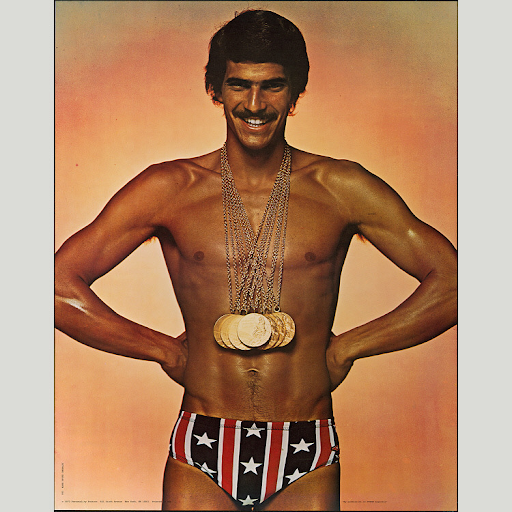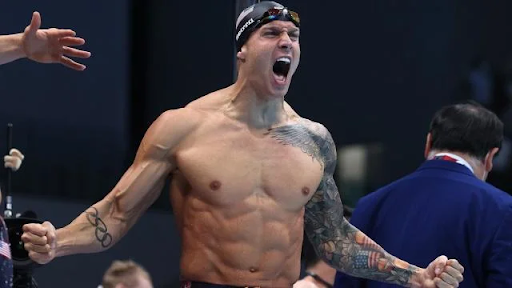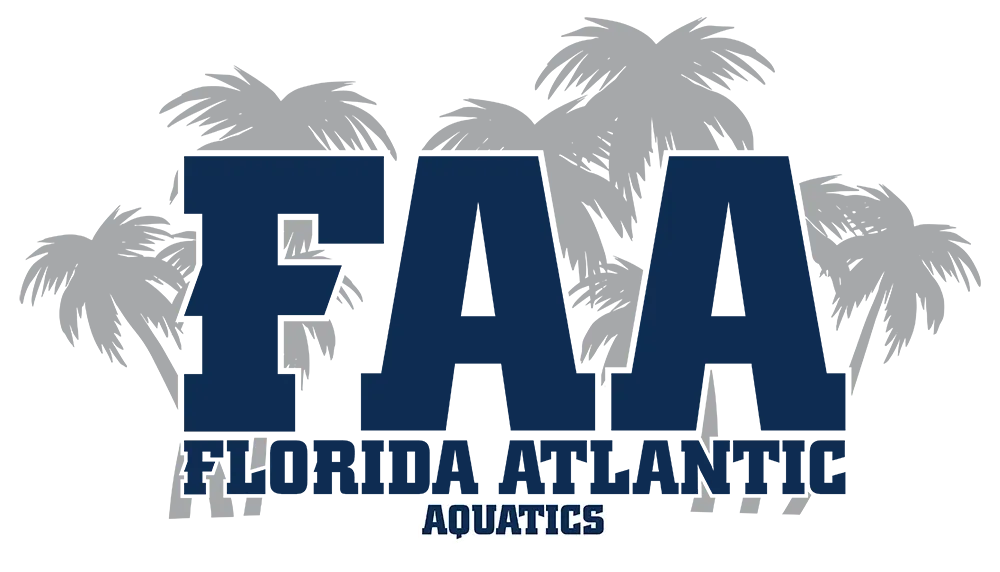"FAA's Strength & Conditioning Component"
An Explanation Of Why We Do What We Do ... Then & NOW !!!


Hi All,
I wanted to share how we envision the Strength & Conditioning component here at Florida Atlantic Aquatics moving forward. Now that we have begun adding the additional half hour each weekday to the hour we offer on Saturdays, I thought it would be important for you to have a better idea of the intellectual underpinnings of why we do what we do. So grab a cup of coffee or some other beverage and be ready for a longer, hopeful informative article
Strength and Conditioning training has been a part of swimming for decades. For many years, it was believed that too much muscles would weigh down a swimmer and make them slower. When the super suit era hit over a decade ago, everyone immediately had balance and buoyancy. Those suits were magic! The difference in those days became strength and power.
When the super suits were banned, many coaches continued to strive to develop strength and power...and guess what? Swimmers started taking down the “untouchable” times from that era. Imagine. Strength is power and power is speed. It worked.
Take a look at the two images below. One is of the iconic swimmers of the late 60s and 70s, Mark Spitz. The latter is of American and Olympic champion Caleb Dressel. Notice any differences?
It is our goal to implement a forward thinking, holistic approach to helping our swimmers create endurance, strength, power and speed; all while ensuring that they do “prehab”, core and flexibility work. It will take a commitment, but I am a firm believer in choosing my hard (more on that in another article).
Below is a document I put together for the FAA coaches. I want to ensure everyone knows our program and is on board. That is also why I am sharing this with the families. I do not want our people to think that we are mindlessly adding more and more just because. Know that we are implementing a systematic approach to each swimmer's overall development in and out of the water.
Everything is not going to be implemented in one fell swoop. It will be introduced over time and in a developmentally effective manner. I just wanted to take some time to let you see the longer term vision. As always, nothing is mandatory and questions are always welcomed. Check out the outline of the program below.
Thanks for giving us the opportunity to work with your swimmers.
See you at the pool - Rich
Florida Atlantic Aquatics - Strength & Conditioning
Strength and Conditioning encompasses many areas including, dryland, pulleys (sprint & endurance) flexibility, “prehab” and more. This living document will help ensure that the FAA staff is doing everything possible to help our athletes not just meet their goals, but do so in a safe, responsible and effective manner.
Our Strength & Conditioning Program Mantra:
SAFE,
SPECIFIC & FUN !
SAFE - Incorporate “prehab”, core and flexibility routines. Ensure we have the proper facilities & equipment and all are functioning properly.
SPECIFIC - Try to utilize moments that are as specific to swimming as possible.
FUN - Strength & Conditioning training is a great way for the swimmers to build strong relationship and bonds with their teammates and coaches while having a great time
Additional Benefits:
- Helps provide body awareness in developing athletes
- Helps with injury prevention
- Helps to increase range of motion for more efficiency in the water and out
- Helps to recruit mitochondria to help make for a more powerful athlete
KEEP IT DEVELOPMENTALLY APPROPRIATE!
Physical and mental maturity are important factors to keep in mind when assigning a strength and conditioning program to our various training groups. A newer/younger athlete will obviously be doing things much different than a 26 year post grad sprinter. We will always keep these developmental differences in mind when we prescribe workouts for each group.
KEEP IT SEASONALLY APPROPRIATE!
Our in water program uses a progressive system of stress and development. Each phase of the season has different energy zone goals to ensure that our swimmers have their maximum capacity in each zone at the end of the season. Our Strength & Condition program will also keep the phase of the season in mind as well as the weekly in water energy zone demands. This will help with proper recovery and maximize short and long term adaptation.
THE FAA APPROACH - MORE THAN JUST “DRYLAND”
DRYLAND & WETLAND - Isn’t dryland done on dry land? Well technically, yes. But remember, we want to be as specific as possible...and what is more specific to swimming than swimming? At FAA, we use two (2) modes to accomplish our dryland (or some may say wetland) goals:
- In Water Training
- Out Of Water Training
In Water
- We use the Power Towers or pulleys for general endurance as well as strength, power and speed We also add additional items to the in water menu, such as drag socks and in water cords when seasonally and developmentally appropriate. All of these ways help us keep our focus as specific to swimming as possible, while giving our athletes the endurance, strength, power and speed they need to help meet their goals.
Out Of Water - We use circuit training, body weight movements, isometrics, bench work, dumbbells, flywheels, Bulgarian bags and weights when appropriate. The number, duration and rest of the exercises is dependent on if we are trying to achieve endurance, strength, power or speed gains.
PUTTING IT TOGETHER
CORE EXERCISES - It all starts with the core. Core exercises are extremely important for all athletes.For swimmers, a well developed core connects the body, increases their stroke efficiency and helps prevent injury by limiting the stress on one part of the body. Core exercises can be used as a part of a circuit or as part of their own highlight in a Strength & Conditioning session. There are too many examples of how to develop the core than we have space for here. We do provide an ab series that is easy for the swimmers to remember and follow. It is a series of seven (7) movements. When performed properly and regularly, it has been proven to be extremely effective. High level athletes make sure that every day is core day...even if they simply do the seven (7) movement routine mentioned above. These exercises can be done at home on days when we stress other aspects of our Strength & Conditioning program.
“PREHAB” - These are exercises designed to help strengthen the muscles swimmers use day in and day out. We use light cords or therabands. Like the core work, this should be like brushing your teeth each day.
FLEXIBILITY
(Stretching) Some stretching should be done each day. A combination of static and dynamic stretching is the best way to help the athletes. A minimum of two (2) longer stretching sessions should occur each week. Flexibility not only helps the swimmer “feel” loose, but also helps in injury prevention and increased range of motion; something that can translate into faster swimming speed with less strokes.
ENDURANCE/STRENGTH/POWER/SPEED - At FAA, we cycle through these stages throughout the course of the season. Each one helps prepare the athletes for the next phase; thus helping to ensure that the athletes are physically ready for the demands that will be placed on their bodies. Let’s examine each phase.
ENDURANCE (CIRCUIT TRAINING) - Circuit training is a great way to get maximum benefits in a short amount of time. This is high intensity, low rest so achieve maximal endurance results. Circuit training is a great way to start a season, build a rapport with teammates and coaches and ensure that the athletes are properly prepared for the demands of other types of training.
Some Examples Include:
- Medicine Ball Routines
- Stretch Cord Routines
- Body Weight Movement Routines (calisthenics)
- Plyometric Routines
- Bulgarian Bag Routines
- Flywheel Routines
- Combination Of All Of The Above
STRENGTH - When most people think strength, they think weights. And yes, “maxing out” on weights is a way to perform strength training out of the pool. When working with developing bodies and younger minds, it is important to keep safety front and center. Improper technique or focus could lead to potentially damaging issues; both of which would be counteractive to our goals. Proper instruction and supervision is critical here. I have heard too many horror stories of athletes trying to impress in the weight room only to wind up hurt. The goal is to minimal reps (1-2) at maximal weight in a safe manner to recruit muscle. A “Max” rep should take some time to complete (5 seconds or so). Keep that in mind as you enter this phase.
Examples Of Some Traditional Weight-Based Exercises:
- Bench Presses (incline, decline, etc)
- Overhead Presses
- Pull Ups
- Lat Pull Downs
- Straight Arm Pull Downs
- Rows
- Various Push Ups
- Various Squats
In addition to traditional barbell/dumbbell/bench exercises, there are other, safer muscle recruiting tactics that can be employed; especially with younger athletes. These are isometric exercises. There are many studies that show that these may actually recruit muscle better than traditional weights and are safer...which is great in our case, especially for the younger and newer athletes. These are static exercises. Most can be done with little or no equipment. While not as specific as a Lat pulldown, for example, they are effective, easy to learn and safe.
Examples Of Some Isometric Exercises:
- Wall Sits
- Planks (Various)
- Low Squat
- Overhead Hold
- Calf Raise Hold
- V Sit
- Bridges
POWER - In this phase, we want to develop acceleration in the swimmer. The weight load is less (medium) and there are more reps (3-5). Proper technique is important as is doing the movements fast (acceleration). Again, it must be done properly to avoid injury and with a launch motion if possible. Many of the same exercises can be done as in the strength phase, just some with that explosive launch added to the movement.
SPEED - These movements and exercises are done with lower weight and additional reps (3-6). Body weight and medicine ball slams are also great in this phase. Explosive plyometrics (leaps, bounds, jumps, etc) are also a part of the mix here.
ORGANIZING THE SEASONAL PHASES - There will additional considerations to be sure (swimmers exercise background, familiarity of the athletes with the programs, equipment and routines for example).
A typical 14 week season might look something like the following:
- Week 1-3 - Endurance (circuit)
- Week 4 - Strength
- Week 5 - Power
- Week 6 - Speed
- Week 7 - Recovery
- Week 8-10 - Endurance
- Week 11 - Strength
- Week 12 - Power
- Week 13 - Speed
- Week 14 - Recovery
And so on ...
BUT WAIT, THERE”S MORE -
AT FAA, we also do someone unique to our program. We have devised a combination strength and local muscular endurance in-water program based on the work of Yuri Verkhoshansky. We have dissected, devised and implemented a fourteen week, twice weekly program (Tuesday & Thursday Morning) that is fun, challenging and effective. The progressive nature of this program helps yield many positive results. Since instituting the program here at FAA less than four (4) weeks as of this writing, swimmers who could barely do a third of a bucket are now doing nearly a full bucket. These gains in this short period of time is remarkable...and it will only get better.
SYNERGY IN AND OUT OF THE POOL - Notice both programs are designed to be fourteen (14) weeks? That is not by chance. We try to make all of our efforts coordinated, focused and precise. Our strength and conditioning should also be in tune with what we do in the water each day as well. Of course, none of this will work without proper nutrition, rest, race strategies and mental toughness. More on those in another article.
See you at the pool - Rich
(All FAA Transactions have a 3.9% CC processing fee)
Quick links
Contact Details
📍Address:
5555 Volusia Street, Boca Raton,
FL 33431, United States
✆ Phone:
✉ Email:
SWIM: FAASwimming@gmail.com
DIVE: FAADiving@gmail.com
LESSONS: FAALessons@gmail.com
CAMPS: FAACamps@gmail.com
All Rights Reserved | Florida Atlantic Aquatics
This site is a service of Captyn and powered by One Eleven's BUILD platform
The content is owned by Florida Atlantic Aquatics and the site is governed by its privacy policy |
Privacy Statement




